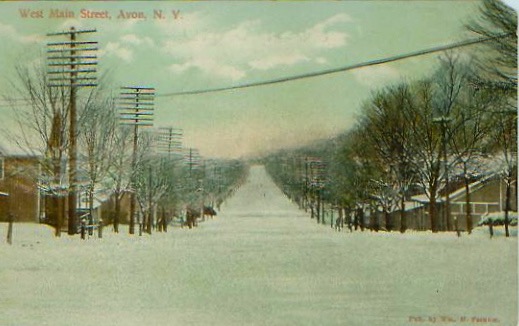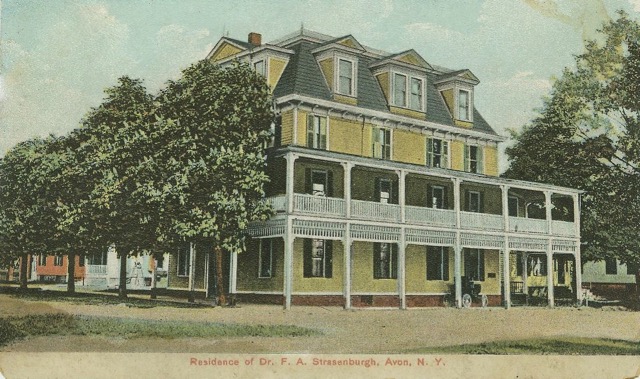The History of Avon
Cornplanter, Seneca Chief. Source: Wikipedia
Avon is located by the gentle north-flowing Genesee River, which has carved out the town's western edge, providing a wide open landscape. The early, long-standing native settlements included Clovis tribes followed by Seneca settlements which thrived in this rich landscape for thousands of years before being forced to yield to the English. Using the local creeks for water-power, mills for refining lumber, grain and wool produced by local farms brought prosperity to the white pioneers who then inhabited the land. Canals and a continuously active railroad shipped their products to distant cities. Agriculture is still a significant industry in the area today.
Early Days
The earliest history of our area can easily be traced through the remarkable geologic narrative. Rock layers contain fossils of the sea, and the drumlins - elongated hills running north to south - which are composed largely of glacial deposits, were created by the ice flows 27,000 years ago. Several drumlins can be seen in the north part of Avon.
After the ice age, the area hosted one of the largest mammals on land - mastodons. In 1990, while constructing the FarView golf course on the Avon-Geneseo Road, mastodon bones were discovered, resulting in a specimen now owned by the Rochester Museum and Science Center. Though not complete, the skeleton of the 20 year old male is dated to be 11,600 years old. Paleo-Indians hunted mastodons, and because of the blade marks on the bones, it is likely the FarView mastodon succumbed to hunting by a nomadic tribe.
Several native populations lived in the area, including the early Archaic Lamoka people in 2500 BC and the Early and Middle Woodland people around 1000 BC. The first permanent Owasco villages on the river flats appeared in year 1000 to 1200.
The Haudenosaunee (hoe-dee-no-SHOW-nee), specifically the Seneca tribe, lived in the bountiful Genesee Valley for over 500 years. The local native village near what is now Avon, was named Ga-no-wa-gas, meaning “stinking waters”, referring to the plentiful odorous sulphur water. It is said they used the water from the springs to cure various ailments.
Important native leaders were born and lived in this area, namely Cornplanter, a Seneca war chief (see more at Significant People) and his half brother, Handsome Lake, who had a calling to revive traditional religion among the Six Nations Iroquois Confederacy.
The tenancy of the native people ended in September 1779, when George Washington ordered a campaign led by John Sullivan in "taking the war home to the enemy to break their morale". They destroyed more than 40 Seneca villages and stores of winter crops, permanently breaking the power of the Six Nations in New York from Pennsylvania all the way to the Great Lakes. White settlers came to the area following the signing of the Phelps and Gorham Treaty of 1789, allowing the land to be purchased. Using the existing Indian foot paths as easy access, notably where Route 5 & 20 now runs, the rich wilderness was quickly developed.
Historic marker at the Genesee River bridge.
The first permanent white settlement was made in 1789 when Gilbert and Maria Berry built a log tavern and later operated a rope ferry over the Genesee River. Dr. Timothy Hosmer and Major Isaiah Thompson purchased the land and named the new community Hartford, a name that was changed to Avon in 1808, to distinguish it from another New York community by the same name. The town was formally organized in 1797, and the village was incorporated in 1853.
Historically, Avon served as both a major stagecoach stop due to its location at the intersection of Routes 5 and 20, and as a place of relaxation and healing due to the abundance of sulfur springs within the town’s borders.
The Spa Era
From 1821 until the early twentieth century, extensive health and recreational facilities graced the area to attract and accommodate guests from far and wide who came to seek relief from various maladies. This map shows the location of the fourteen grand hotels which housed the guests during the height of this era, though not all existed at the same time.
Spa Map. Source: Avon Town Historian
Here are a few of the grand accommodations used during the Spa Era:
Take an historic walk around the Village Circle Park using this slideshow of old postcards:













